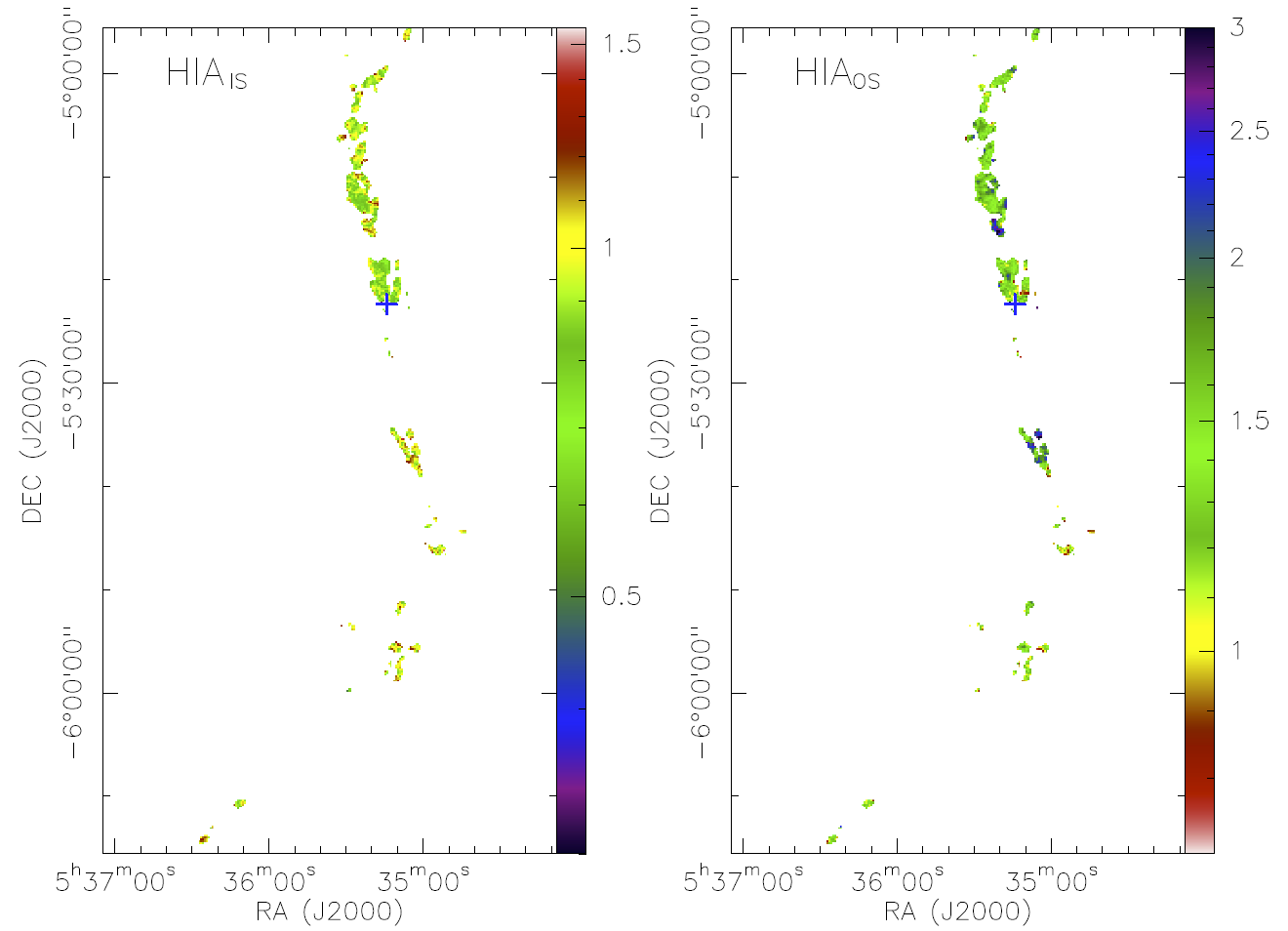Ammonia (NH3) inversion lines, with their numerous hyperfine components, are a common tracer used in studies of molecular clouds. In local thermodynamical equilibrium, the two inner satellite lines and the two outer satellite lines of the NH3 (1,1) transition are each predicted to have equal intensities. However, hyperfine intensity anomalies (HIAs) are observed to be omnipresent in star formation regions, a characteristic which is still not fully understood.
Researchers in star formation group find that the computation method of the HIA by the ratio of the peak intensities may have defects, especially when used to process the spectra with low-velocity dispersions. Therefore, we defined the integrated HIA by the ratio of their redshifted to blueshifted integrated intensities and developed a procedure to calculate them. Based on this procedure, we present a systematic study of the integrated HIAs in the northern part of the Orion A MC. We find that integrated HIAs are commonly present in the Orion A MC and no clear distinction is found at different locations of the MC. The statistic results are consistent with the HIA core model. Finally, only weak correlation is found between the HIA and temperature, density, and velocity dispersion etc. parameters.
For details: https://ui.adsabs.harvard.edu/abs/2020A%26A...640A.114Z/abstract

Fig.1 Integrated hyperfine intensity anomalies of the inner satellite lines (left panel) and the outer satellite lines (right panel) in the Integral-Shaped Filament (ISF) of the Orion A molecular cloud.
Contact: WU Gang
Xinjiang Astronomical Observatory, Chinese Academy of Sciences
Email: wug@xao.ac.cn